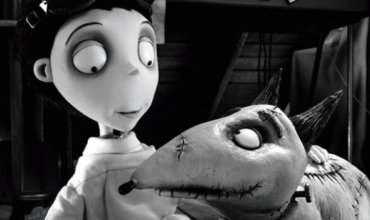The name and icon that is Ned Kelly looms large over the last 140 years of Australian history. He was a bushranger who committed crimes and was imprisoned, but who gained popular support for his actions. His life and death has been turned into the stuff of legend, ready to be repurposed and turned to any cause or idea that anyone desires. The image of Ned Kelly in his armour can be used to sell anything from car mufflers through to political ideas (although putting him in an ad for a bank would probably be a stretch.)
TRUE HISTORY OF THE KELLY GANG is the film adaptation of Peter Carey’s Booker Prize-winning novel of the same name. Anyone seeing this film hoping for a careful and detailed recreation of a “historical” Kelly is not going to find it. There is nothing authorised about this take on the life of our most famous outlaw. The official blurb for the movie is: “An epic, fictionalised re-telling of the life of legendary Australian bushranger Ned Kelly, revealing the essence behind his notorious life.”
“Fictional, epic and notorious” is precisely what director Justin Kurzel and writer Shaun Grant are shooting for. As expected, the Australian Bush is a setting for much of the action, however it is populated with big characters who don’t have the feel of the late 19th Century. Kurzel has, in fact, stepped right into the arena that few Australian filmmakers are comfortable entering: non-naturalistic filmmaking. This country is great at naturalism or “realism”, it’s the default style for most mainstream movies everywhere, but it is not the only way to tell a story.
We are first presented with a young Ned (well played by Orlando Schwerdt) and we discover the difficulty he has dealing with his mother’s expectations and the attitude of his father. Locations and set choices have modern, anachronistic details (e.g. one of the buildings is a converted seatainer) and these indicate the intentionally non-historical take of the film. By the time, George MacKay appears as the older Ned, the numerous choices in terms of language, music, hair and wardrobe make it clear this is a contemporary interpretation of the 1870s. Every historical film is an interpretation, but most attempt to create the illusion of history that the audience can agree upon (i.e. no-one using smartphones in a World War 2 setting). Kurzel has dispensed with this and as always, it’s a risk.
Kelly is well known for his bushranger beard. It’s the way that Australians see him. The cylindrical helmet, full body armour and the beard. This version of Kelly is beardless, often gets around shirtless and is an energetic, sometimes hyperactive, young punk who seems more 1970s than 1880s. On occasion, he looks as though he is on his way to see Nick Cave and The Birthday Party at the Crystal Ballroom. In other scenes, such as the those with his bushranger mentor, Harry Power (Russell Crowe) there is a convincing sense of the 19th century with its social inequalities and the government’s abuse of power through the police and the military.
Ned has been taught to despise authority by his mother Ellen (Essie Davis) and he confronts power directly in his dealings with Sergeant O’Neill (Charlie Hunnam) and Constable Fitzpatrick (Nicholas Hoult). From boyhood on, he has experienced the injustices meted out to his family and he goes into the world ready to strike back at any one looking to put the Kellys in their place. He is a coiled spring.
The film effectively plays upon our anticipation that revenge and retribution is headed towards Ned and his followers. However, we are thrown some confusing curve-balls. The criminal acts of the Kelly Gang are not clearly told and defined. We are presented with the idea that there was an older gang of Irish rebels called the Sons of Sieve who confused and frightened their enemies by wearing women’s clothing. This becomes a visual in the film, when Ned and the gang take this on, but is not thoroughly worked out. It also becomes part of a vague notion that Kelly is exploring his sexuality. There are also some ambiguous scenes linking the abuse of power with sexual abuse and the class system. This is thrown out there and it is left to us to put the pieces together into a coherent form.
In the end, this is a collection of energetic scenes with some terrific performances from Essie Davis, Nicholas Hoult, Russell Crowe and George MacKay (who is also currently in Sam Mendes’ 1917). The story becomes muddled, which reduces the effect of the conclusion. I was entertained by many of the artistic choices, but other viewers made find these ideas annoying and confusing.
TRUE HISTORY OF THE KELLY GANG is a bold attempt to reinterpret an Australian legend that many feel invested in. I found the film engaging much of the time, but too ambiguous and confusing, in a number of scenes, to be considered a success. Like the Curate’s Egg, it’s good in parts. Run-Time: 2 hours, 4 minutes. (6/10)
Transmission Films launched the film on January 9 and streaming service Stan will make the film available from January 26.


